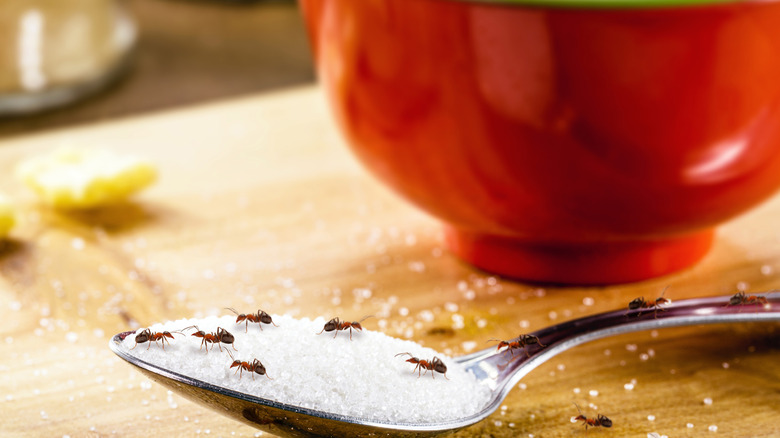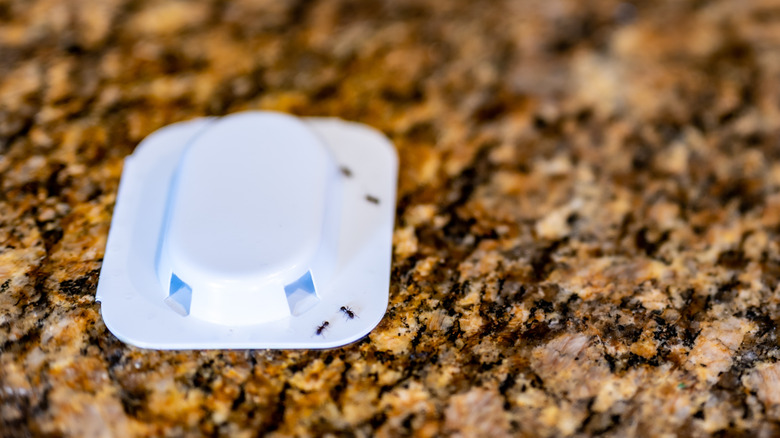This Is The Ant Bait Warning You Shouldn't Ignore
Ants in the kitchen are hardly a welcome guest, but because they're strongly attracted to food sources, you might find them there anyway. There are natural ways to get rid of ants in your home, such as creating a vinegar spray, but one of the most effective techniques to control ants is to place ant baits. Ant baits work by attracting ants with a food bait that actually carries a slow-acting insecticide, which is toxic to ants but won't kill them immediately. That way, ants who interact with the bait trap will spread the insecticide around to the other members of the colony, thereby wiping out your intruders and keeping them from coming back. But when using ant baits, your own safety is key. The primary warning to consider is that insecticides can be harmful if ingested, so it's important to place them out of reach of any children or pets, and avoid placing them in food-preparation areas or directly next to silverware, plates, or cooking utensils. Some experts also recommend keeping the baits away from sinks and water sources.
Where preventative techniques can naturally deter ants from entering your kitchen, ant bait works the opposite way by attracting the ants to it. So once you've set up a bait, it's normal to see an influx of ants flocking to it. Luckily, that means the treatment is working, but it also emphasizes the need for proper placement. That's why it's a good idea to place baits away from foods such as fruits since fruits with high sugar concentration already attract ants, and you want to send the ants straight to the bait, rather than attract them to a food source (and that includes pet food).
Where to place baits for safe and effective ant control
Knowing where to place ant baits means knowing where the ants in your home are traveling (and what's making it so easy for them to get there). Ants are attracted to food and sugar, so placing baits inside cabinets and pantries can be a good idea, mainly because the undersides of cabinets are often an entry point for ants (close to the entry, but away from food). Other routes that ants can sneak in through include wall openings or beneath your refrigerator and stove. But pay attention to the conditions of the areas where you're placing the baits. You might think a recently disinfected area would be a good option, but because detergents and other cleaning chemicals deter ants, a bait placed there might not appeal to the ants and therefore might not do the trick. You can circumvent this issue by thoroughly rinsing (and drying) the areas where you lay the bait so there aren't remnants of any cleaning products. With that step taken, placing the bait in a clean area is a great way to ensure the ants won't get distracted by any food sources on their way to the insecticide.
Throughout the process, safety should remain a top concern, especially since the baiting process can take time to work, so you might have to get used to having the baits around for a week or more. Additionally, you may need to actively check and replace the baits when they fill up, which means you might end up exposing your skin to the baits as you dispose of and replace them. Touching the baits can (but might not) cause skin irritation, so it's important to wash your hands regularly, and that's particularly significant if you have children who might experience nausea if they ingest the insecticide.

